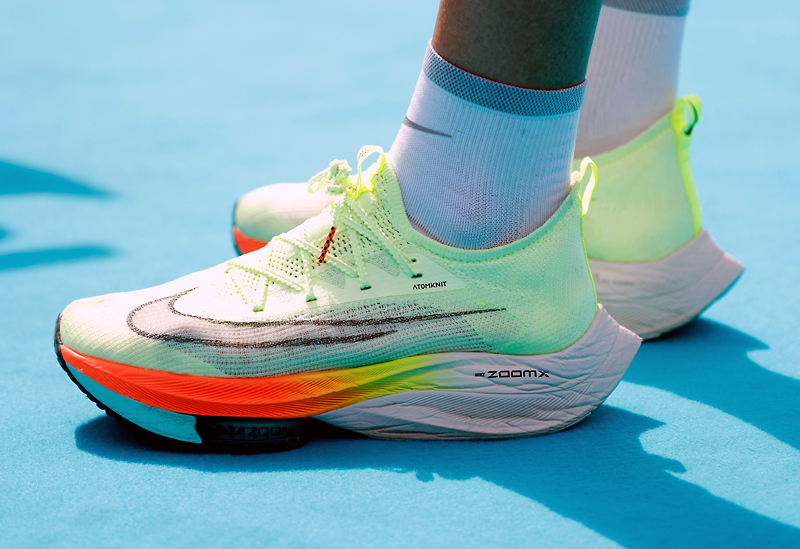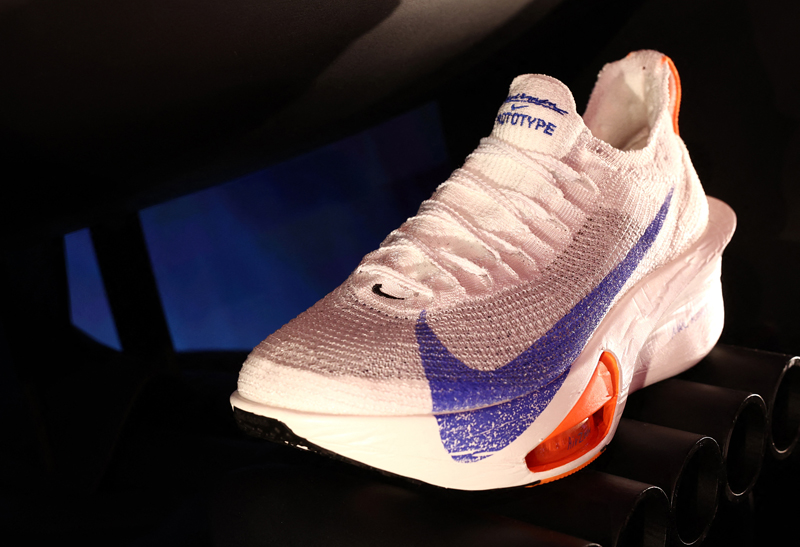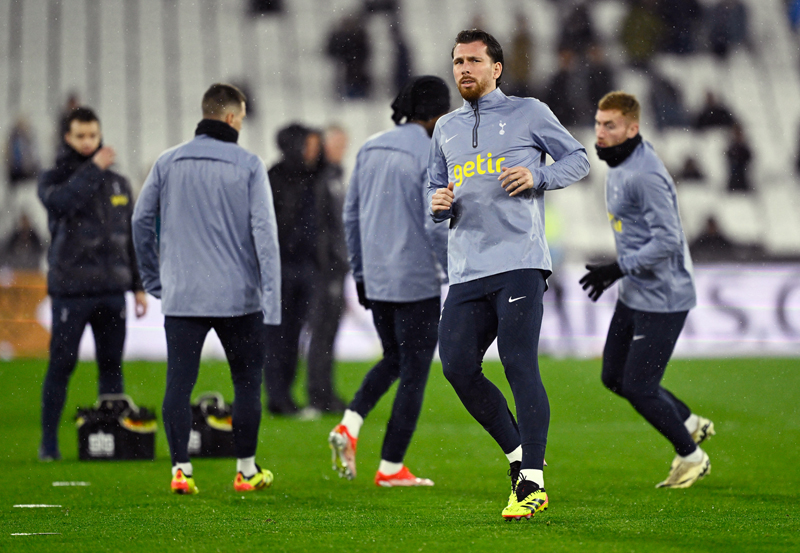You are viewing 1 of your 1 free articles. For unlimited access take a risk-free trial
Running shoe choice: stiff or flexible midsoles for performance?
SPB looks at new research on how the longitudinal stiffness of your running shoe can influence running performance
When it comes to choosing a running shoe best matched to a runner’s needs, there are a number of factors to consider. Among these are anticipated training mileage, intensity and frequency. Equally important are the runner’s training background and personal/anthropomorphic characteristics, such as body mass, foot type (flat foot or high arch) and preferred running gait. These factors are critical because shoe choice needs to be properly matched to these characteristics in order to prevent or minimize the risk of injury.
Selecting a running shoe
Although there have been a number of recent studies comparing minimalist running shoes with conventional shoes (see this article as an example), there is still relatively little information available about the fundamentals of running shoe design and construction, and how this affect both performance and injury risk. This is no doubt largely due to the vast number of different shoe designs on the market, and the fact that even within a manufacturer’s model range, shoe design often changes year on year. Indeed, many runners report they feel overwhelmed by the ever-changing choices!
Typically, runners choose a running shoe on the basis of how it is marketed by the manufacturer (eg motion/pronation control, cushioning, suitability for racing etc), advice given by experienced staff at retail outlets and of course, how it feels on the foot when tried out for a quick test run! The design and construction of running shoes typically do not play a significant role in determining whether a shoe is suitable. This perhaps is understandable; if the shoe is marketed as fulfilling a functional brief and suitable for a certain type of runner, and if it feels good on the foot, why would its construction be relevant?
Running shoe construction and running economy
It turns out that when running performance is paramount, there are certain elements of running shoe construction that really do matter. One of the most important ways that shoe construction can influence performance is in relation to ‘running economy’. Running economy (sometimes called muscle economy or muscle efficiency) refers to how efficient the muscles involved in forward propulsion during running are in terms of oxygen usage during sub-maximal exercise (ie not flat out). The higher the running economy of muscles during exercise, the less oxygen is needed to propel a runner at a given sub-maximal speed.
Because endurance running events such as marathons and triathlons are not run flat out all the way, but at a sustainable sub-maximal speed, running economy actually plays a very important role in determining overall performance. Moreover, studies unequivocally demonstrate that elite runners have much higher levels of running muscle economy than their amateur or recreational counterparts. In other words – muscle economy and high levels of endurance go hand in hand.
To give you an idea of the importance of running economy, one study of collegiate cross-country team members discovered that just two factors – maximum aerobic capacity (VO2max) and running economy - could account for 92% of the variance in performance during an 8000m running race(1). Also, running economy has been successfully used as a key parameter (along with oxygen uptake figures) to predict marathon pace in elite runners(2).
Furthermore, research investigating the greater performance levels of elite Eritrean runners compared to European runners possessing the same maximum aerobic capacity found that it was the superior running economy of the Eritreans that was entirely responsible for their better performances(3). And just in case you run away with the idea that running economy is only important to highly trained or elite runners, bear in mind that research on recreational runners has found that running performance is very closely related to running economy(4). In other words, higher levels of running economy in amateur runners is also very strongly associated with superior running performance.
Sole stiffness and running economy
One of the aspects of shoe construction that has attracted the recent attention of sports scientists is something called ‘longitudinal bending stiffness’, or LBS for short. LBS refers to how easy or hard it is to bend the midsole of a running shoe along its length (see figure 1). A high level of LBS means that more force and energy is required to bend the shoe along the long axis during the propulsion phase - where the runner pushes off with the rear leg, raising the heel while the toes remain in contact with the ground. Providing this bending is elastic in nature, greater LBS can act as an energy store, returning energy during the next stride. This in theory could help energy losses during footstrike, thereby helping runners to run faster and more efficiently.
Figure 1: Longitudinal bending stiffness
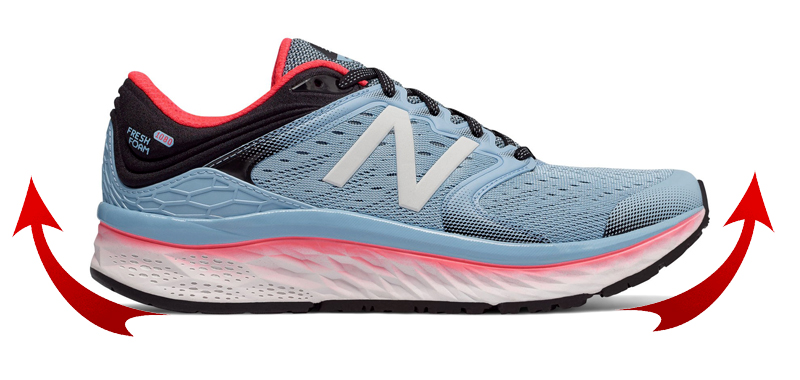
One effective way of increasing LBS in a shoe without adding significant weight (which would harm running economy) is by the insertion of a carbon fiber plate in the midsole. Indeed, in the wake of the quest to break the 2-hour marathon barrier (see this article), carbon-fiber plates have become commonplace in marathon racing shoes. But do they actually work?
Mixed results
Despite the theoretical benefits of this shoe technology, studies on the effects of increased longitudinal bending stiffness on running economy report mixed results. In a comprehensive 2021 review of the literature on midsole bending stiffness and carbon-fiber plates in distance running shoes, researchers looked at how LBS affects running energetics (efficiency) and lower limb mechanics(5). They found a wide range of results in the literature on increased LBS and running economy, ranging from a 3% improvement to a 3% decrease!
These inconsistent results were put down to the fact that different studies used a wide range of different shoes with all sorts of other construction variables, which meant it was difficult to make meaningful comparisons. Another confounding factor may be the terrain over which shoes are tested. While shoes with carbon fiber inserts on the midsoles are popular among elite runners performing race event on the track of flat courses, this may not hold true for hilly terrain.
In a study by French researchers in January of this year, the use of high vs. low LBS shoes using carbon fiber inserts while running on the level and running uphill at two different speeds was studied(6). The overall results showed there was no effect of LBS on running economy during uphill running, and even on the flat. Yet, they also noted very large inter-individual differences, with some runners benefitting significantly from high-LBS shoes and others not.
New research
To try and reach some definitive conclusions on the benefits or otherwise of high-LBS shoes, a team of Spanish researchers has carried out some innovative research, which has just been published in the journal Medicine and Science in Sports and Exercise(7). In this study, the researchers aimed to assess the effects of shoes with increased LBS on running economy and performance in trained and national runners (ie elite and non-elite).
What was different about this study is that the scientists developed an experimental running shoe specially for the study, which could be either fitted with a carbon fiber plate to increase LBS or used without the plate, thereby reducing LBS. The purpose of this experimental shoe was to eliminate the large number of other construction variables that occur when comparing two differently constructed shoes with differing levels of LBS (and which could therefore help or hinder runners with certain gait patterns). In plain English, the only variable being tested was the use of the carbon plate to increase LBS.
What they did
Twenty-eight male runners were divided into two groups according to their 10km performance times:
· Trained (10K times of 38-45 minutes)
· National runners (10K times of under 34 minutes)
All of the participants ran two sessions each consisting of two bouts of 3 minutes at different speeds. These speeds were at 9 and 13kmh for the trained runners, and 13 and 17kmh for the national runners. One of the sessions was performed with the experimental shoe with carbon fiber plate to increase the LBS while the other used the control shoe (same shoe, identical construction but without carbon fiber plate. In all the bouts, the researchers measured energy cost of running for each runner (in watts per kilo) as well as running gait and movement patterns. In addition, the participants performed two 3,000m time trials on two separate occasions – one using the high LBS shoe and one using the low LBS shoe.
What they found
In a nutshell, the results were overwhelmingly in favor of the high LBS shoe, and not just for the elite runners! When it came to running economy (see figure 2), using the high LBS shoe improved performance in the trained (non-elite) group at both 9kmh and 13kmh. At the lower speed, economy improved from 11.86 to 11.41 watts per kilo when switching from the low to high LBS shoe (remember, less watts per kilo needed to maintain a sub-maximal pace equates to better running economy). At 13kmh, economy using the high LBS shoe was 15.89 watts per kilo compared to 16.39 watts per kilo with the low LBS shoe. In the elite runners, economy improved only at the fast velocity (20.35 watts per kilo using the high LBS shoe vs. 20.78 watts per kilo with the low LBS shoe.
But did these improvements in running economy with the high LBS shoe translate to improved 3,000m time trial times? Here again, the high LBS shoe showed its worth; in the high LBS time trial, the average time for the trained runners improved by 5 seconds compared to the low LBS shoe (639 seconds vs. 644 seconds). There was a similar 5-second improvement with the high LBS shoe in the elite runners, where times improved from 574 seconds to 569 seconds when switching to the high LBS shoes. Interestingly, another finding was that in both groups of runners, performing the 3,000m trial using the high LBS shoe resulting in more even and constant pacing.
Figure 2: Running economy at different speeds and midsole stiffness
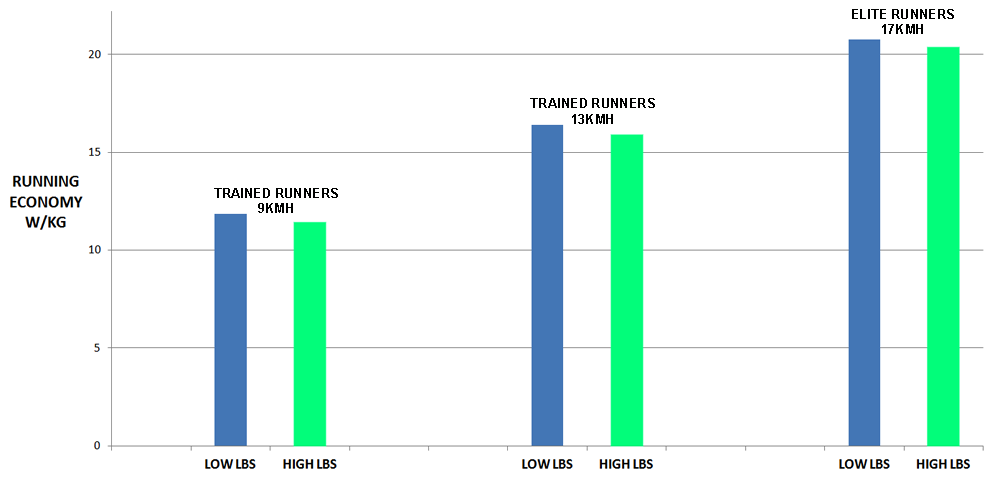
Explaining the improvements
The researchers above also noted that the runners’ movement patterns (kinematics) changed subtly when using the high LBS shoes. They therefore concluded that these small modifications in running kinematics could explain the improvements in running economy with the high LBS shoes. There actually good evidence that this is indeed the case. In a study published last year, researchers investigated whether changes in the longitudinal bending stiffness of running shoes can affect joint work redistribution during prolonged running(8).
Fifteen trained male runners (10km times of under 44 minutes) performed two 10km runs on two separate occasions at 90% of their individual ‘lactate threshold speeds’ at (ie the speed when blood lactate levels exceed 1 mmol/L) in a control and high LBS shoe condition. Lower limb joint kinematics and kinetics were measured using a motion capture system and a force-instrumented treadmill during both runs. What they found was that when the high LBS shoes were worn, less positive work was performed at the ankle and more positive work was performed at the knee joint as the run progressed. This effect was minimal at the beginning of the run but steadily increased as the run progressed.
Why would this effect improve running economy? This is because ankle plantar flexor muscles are shorter and have smaller cross-sectional areas compared to knee extensor muscles (quadriceps). Redistributing more of the workload from the smaller ankle and foot muscles to the larger muscle groups of the thigh means that workload per unit volume of muscle is reduced, which aids muscle efficiency.
Recommendations for runners
The studies above provide solid evidence that running shoes with higher levels of longitudinal midsole stiffness can help improve running economy and performance, not just in elite runners but in amateur runners too. Therefore, so long as a pair of running shoes ticks all your other requirements (eg cushioning, motion control etc), shoes with a stiffer midsole could offer an additional advantage.
That said, there are some important caveats to add. Firstly, it’s important to understand that increasing shoe weight can degrade running economy(9). So if that stiffer midsole comes with a significant weight penalty, you might not get much of an overall performance gain. The second issue is cost. The inclusion of technologies such as lightweight carbon fiber plates in high LBS shoes is not cheap; those on a budget might be better off with less exotic, lower LBS and cheaper shoes, which are more affordable, and therefore can be replaced more frequently, which in turn reduces the risk of injury.
Finally, and on the subject of injury, there are certain types of runners for whom high LBS shoes may be unsuitable due to increased risk of injury. In a 2019 study, Canadian researchers investigated lower-limb joint work when running in a shoe with increased midsole bending stiffness (compared to a control shoe)(10). Thirteen recreational runners ran on a treadmill at 7.8mph under two shoe conditions while motion capture and force platform data were collected:
1. Shod in commercially available running shoes.
2. Shod in the same shoes with carbon fiber inserts to increase midsole bending stiffness.
The results showed that running in the high LBS shoe (with carbon fiber inserts) resulted in significantly heavier loading at the metatarsophalangeal (MTP – where the toes meet the foot) joints. There was also a greater plantarflexor (foot muscle) loading as a result of increased vertical ground reaction forces at the instant of peak power. In short, both the metatarsal joints and muscles of the base of the foot were more heavily loaded when wearing high LBS shoes. The obvious implication is that runners with a history of MTP joint or plantar injury (eg plantar fasciitis – see this article) should most definitely avoid shoes with high levels of midsole bending stiffness!
References
1. J Sports Med Phys Fitness. 1991 Sep; 31(3):345-50
2. J Physiol. 2008 Jan 1; 586(1):35-44
3. Appl Physiol Nutr Metab. 2006 Oct;31(5):530-40
4. J. Sports Med. Phys. Fitness 2017; 57(9), 1111–1118
5. Sports Med. 2021 May;51(5):873-894
Newsletter Sign Up
Testimonials
Dr. Alexandra Fandetti-Robin, Back & Body Chiropractic
Elspeth Cowell MSCh DpodM SRCh HCPC reg
William Hunter, Nuffield Health
Newsletter Sign Up
Coaches Testimonials
Dr. Alexandra Fandetti-Robin, Back & Body Chiropractic
Elspeth Cowell MSCh DpodM SRCh HCPC reg
William Hunter, Nuffield Health
Keep up with latest sports science research and apply it to maximize performance
Today you have the chance to join a group of athletes, and sports coaches/trainers who all have something special in common...
They use the latest research to improve performance for themselves and their clients - both athletes and sports teams - with help from global specialists in the fields of sports science, sports medicine and sports psychology.
They do this by reading Sports Performance Bulletin, an easy-to-digest but serious-minded journal dedicated to high performance sports. SPB offers a wealth of information and insight into the latest research, in an easily-accessible and understood format, along with a wealth of practical recommendations.
*includes 3 coaching manuals
Get Inspired
All the latest techniques and approaches
Sports Performance Bulletin helps dedicated endurance athletes improve their performance. Sense-checking the latest sports science research, and sourcing evidence and case studies to support findings, Sports Performance Bulletin turns proven insights into easily digestible practical advice. Supporting athletes, coaches and professionals who wish to ensure their guidance and programmes are kept right up to date and based on credible science.
